We explain what chromosomes are, what their shape is like and the structure they present. In addition, its characteristics and functions.
What are chromosomes
Chromosomes are known as certain highly organized structures that exist inside cells . They are made up of genetic material (DNA) and various other proteins . In them resides the genetic information of the living being .
Chromosomes are found in pairs , generally in identical numbers for all individuals of the same species, but they can vary in different types of cells . Depending on the number of chromosomes they have (called chromosomal load ), they can be diploid (2n, full load) or haploid (1n, half load).
In eukaryotic cells (provided with a defined cell nucleus), chromosomes are made up of chromatin . But they are also made up of RNA and other proteins, some very basic called histones, along with other non-histones. All of this makes up nucleosomes, inactive groups of DNA that make up the foundational building blocks of each chromosome.
The total panorama of an individual's chromosomes, a sort of genetic map, is called a karyotype.
Chromosome shape
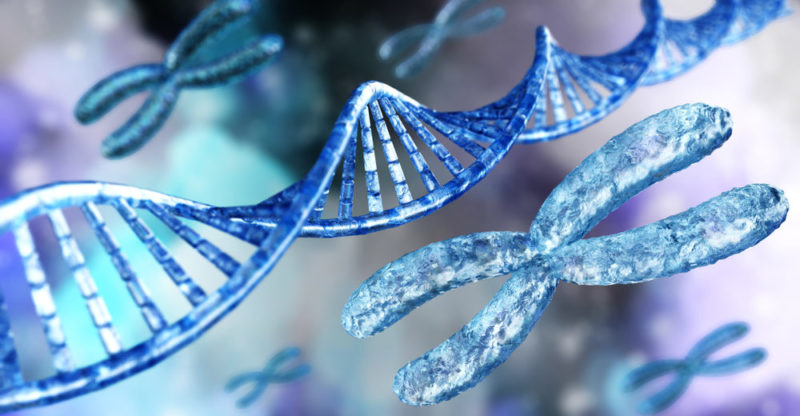
Each chromosome has a characteristic shape and size .
However, they tend to an X-like shape (in eukaryotes) or a circular shape (in prokaryotes).
Its shape is observable under a microscope during the stages of meiosis or mitosis (cell division or replication).
Chromosomes measure between 10 and 20 microns , being able to reach smaller sizes in simpler living beings.
Chromosome pairs can be different in length, but they are generally very similar, since they have the same genes in the same order . This is not always the case, for example, sex chromosomes differ considerably from each other.
Chromosome structure
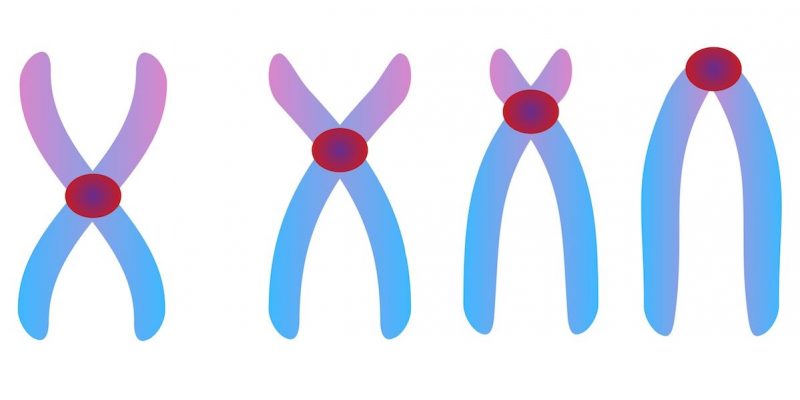
Chromosomes have a double structure , composed of two long forms, parallel to each other, called chromatids. They are linked together at a focal point called the centromere.
Genes are located on each "arm" of a chromatid . In identical position with respect to its counterpart, in compartments called locus ( loci in plural).
The centromere of chromosomes divides each chromatid into two segments, called “arms”: a short one (p arm) and a long one (q arm). And depending on the location of the centromere we will be in the presence of:
- Metacentric chromosomes. They have the centromere almost in the exact middle of the structure, forming arms of very similar length.
- Submetacentric chromosomes. They have the centromere displaced from the center, but not totally towards either end. They have inaccurate and asymmetrical arms, clearly distinguishable.
- Acrocentric chromosomes. They have the centromere near one end, away from the center, forming enormously unequal arms.
- Telocentric chromosomes. The centromere is at the end of both chromatids and appears to form only two arms.
Chromosome function
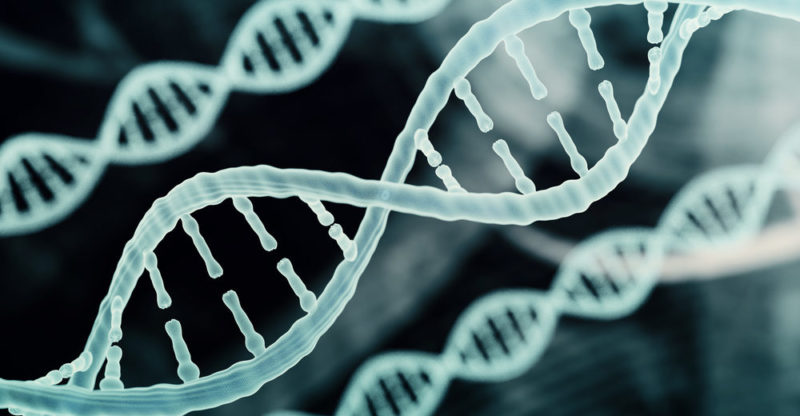
These biological structures preserve the genetic content and prevent (where possible) it from being damaged or lost. In other words, they are guarantors of the transmission of the genetic information stored in the DNA of the mother cell to its descendants during cell replication.
A loss of said information, due to the destruction or deterioration of a single chromosome, can lead to malformations , diseases or syndromes in the individual that deteriorate their health or proper functioning.
Chromosome types
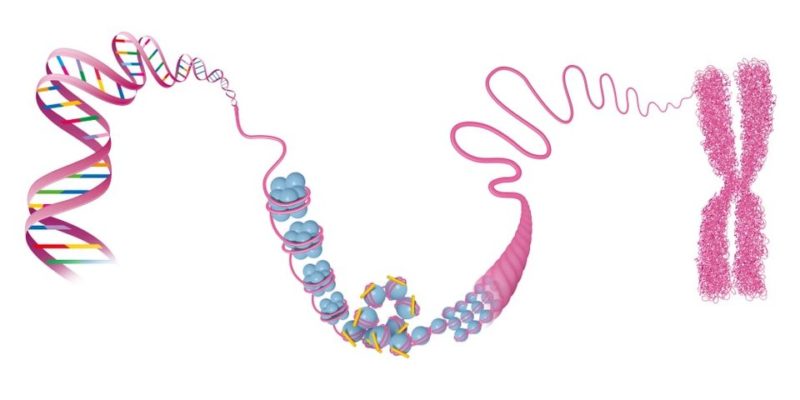
There are different chromosomes for eukaryotic and prokaryotic cells , differentiable both in shape and structure:
- Prokaryotic chromosomes. They have a single DNA strand, are found within the nucleoids scattered in the cytoplasm of these unicellular organisms, and have a circular shape.
- Eukaryotic chromosomes. They are considerably larger than prokaryotes, and have a linear double strand of DNA (double helix). They are X-shaped.
- Polygenic chromosomes. Characteristic of the tissues of certain insects and especially in their salivary glands, they are produced in nuclei in permanent replication (permanent interface). They are chromosomes of hundreds or thousands of strands joined together and of great size (up to 7.5 microns).
- Brush chromosomes. Observed in the ovules of salamander ( Ambystoma mexicanum ), they are some of the largest observed in reproductive cells of non-mammalian animals . They are in the form of "curlers" or loops in the manner of a brush or brush.
- Chromosomes B. It is a heterogeneous set of supplementary or "spare" chromosomes, called supernumerary and typical of some animal species. These are smaller than the normal ones (the "A") and obey alternative inheritance patterns.
Eukaryotic chromosomes
 In addition to what has already been said, the chromosomes of eukaryotes or eukaryotes have telomeres at their ends or arms : a sort of “plugs” made up of regions of repetitive and non-coding DNA. These extremes do not have indispensable information, but they provide structural stability to the entire assembly.
In addition to what has already been said, the chromosomes of eukaryotes or eukaryotes have telomeres at their ends or arms : a sort of “plugs” made up of regions of repetitive and non-coding DNA. These extremes do not have indispensable information, but they provide structural stability to the entire assembly.Furthermore, eukaryotic chromosomes can be classified according to their specific function within the individual's genetic makeup. This is extremely important when creating a new individual of the species, especially through sexual reproduction . Thus, we can talk about:
- Somatic chromosomes. Also called autosomal chromosomes, they give the individual their non-sexual characteristics, that is, those that define them in their non-reproductive vital aspects, such as their shape, size, structure, etc.
- Sex chromosomes. Also called allosomes, they are those that (in addition to other characteristics) determine the sexual characteristics of the individual, that is, they differentiate the individual according to their biological gender: male and female. In the case of human beings , the first men have a 23 pair of chromosomes of type XY (by appearance), while women of type XX.
Prokaryotic chromosomes
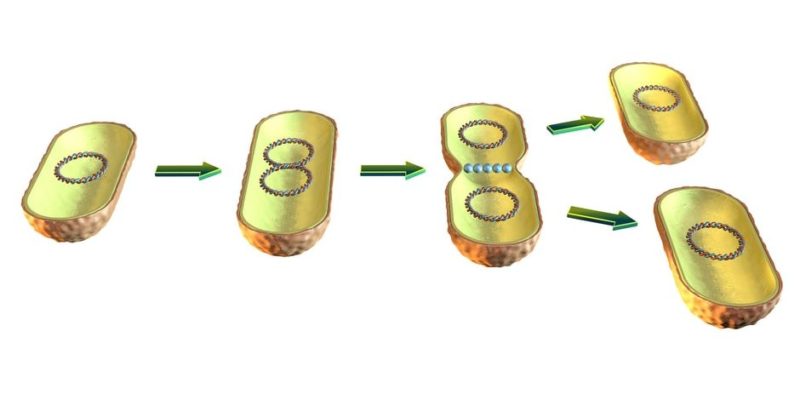 In prokaryotic organisms ( bacteria and archaea), chromosomes do not have telomeres , as they are circular in shape and much simpler in structure (a single DNA strip). In fact, they usually have a single chromosome that contains all genetic material.
In prokaryotic organisms ( bacteria and archaea), chromosomes do not have telomeres , as they are circular in shape and much simpler in structure (a single DNA strip). In fact, they usually have a single chromosome that contains all genetic material.DNA replication begins in various sectors of its cytoplasm , more or less organized depending on the species. This is because they are much simpler and primitive forms of life, whose reproduction is always asexual (mitosis).
Why are chromosomes important?
The function of chromosomes is crucial to the existence of organized life . On the one hand, they are responsible for the transmission of genetic material and direct their sexual or asexual reproductive processes. But they also carry the information for the entire functioning of the cell and, consequently, of the organism.On the other hand, thanks to its organization, genetic information takes up little space and its handling facilitates cell replication. And this is a vital process for the growth of organisms, the replacement of their old or damaged cells, or reproduction.
Human chromosomes
The chromosome number of the human species is 23 pairs (that is, 46 chromosomes). Of these, 22 correspond to somatic chromosomes and 1 to sex chromosomes.In the chromosomes, every detail of our karyotype is contained. The genetic information they contain is that of 3.2 billion DNA base pairs (about 3 Gigabytes of information) that make up between 20,000 and 25,000 genes.
In 2016 , the total sequencing of human genetic material was completed , as part of the Human Genome Project, founded in 1990 with a budget of 3 billion dollars.
How were chromosomes discovered?
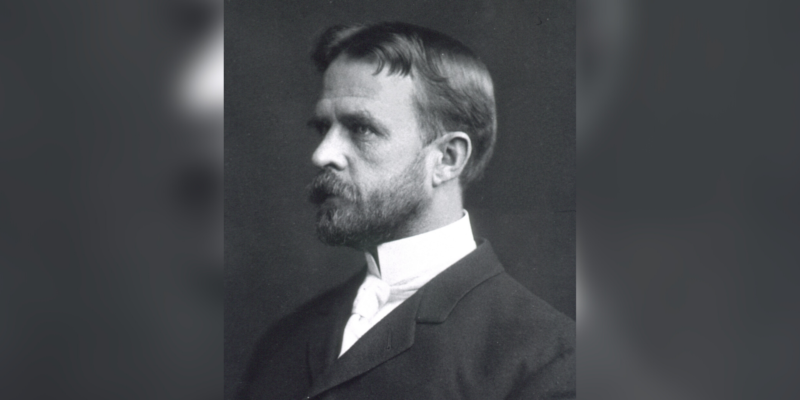 Chromosomes were discovered in plant and animal cells (worms of the genus Ascaris ) at the end of the 19th century. Scientists Karl Wilhelm von Nägeli (Switzerland) and Edouard Van Benenden (Belgium) made the same discovery simultaneously and independently.
Chromosomes were discovered in plant and animal cells (worms of the genus Ascaris ) at the end of the 19th century. Scientists Karl Wilhelm von Nägeli (Switzerland) and Edouard Van Benenden (Belgium) made the same discovery simultaneously and independently.Its name comes from the tinctures used to observe them (from the Greek: chroma , "color", and soma , "body"). However, it was not until the 20th century that the role they play in genetic transmission was understood.
In the 19th century, Gregor Mendel had already explained how inheritance works , without knowing about the existence of chromosomes. In the 20th century, Thomas Morgan demonstrated the relationship of chromosomes to heredity. This discovery earned him the Physiology and Medicine prize in 1933.
Genetic manipulation
Thanks to the enormous advances in medical and biological technology, today it is possible to intervene in chromosomes to induce certain characteristics or behaviors in living beings. This allows to genetically modify food or animals, to make them more nutritious, more voluminous, etc.This represents a huge range of technical and industrial possibilities , but also a responsibility and a huge ethical dilemma. The consequences of playing with nature and the future of life can be unpredictable.
In addition, this type of technology opens the door to moral questions regarding the alteration of the human genome. On the one hand, this type of alteration could lead to new forms of discrimination , but on the other hand, also to the much desired cure of many congenital diseases.
The above content published at Collaborative Research Group is for informational and educational purposes only and has been developed by referring reliable sources and recommendations from experts. We do not have any contact with official entities nor do we intend to replace the information that they emit.
Luke is passionate about fostering student involvement and connection. He studied psychology for his major and likes learning about the past. Luke aims to specialize in artificial intelligence and cybersecurity. .
Leave a reply
Your email address will not be published. Required fields are marked *Recent post

Sport: What Is It, Types, Risks, Features, Characteristics and Examples

Dogs: Emergence, Features, Characteristics, Feeding and Breeds

Story: Definition, Elements, Structure, Features and Characteristics

